Matrices (FAQ)
- What is a zero matrix?
It is a matrix with all its elements equal to zero.
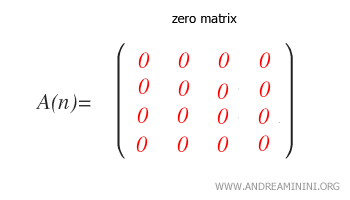
- What is a square matrix?
It is a matrix with the same number of rows and columns (m=n).
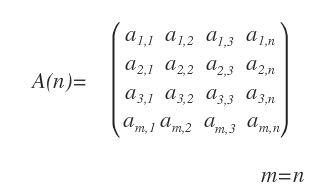
- What is a transpose matrix?
A transpose matrix AT is a matrix obtained by transforming each row into a column.
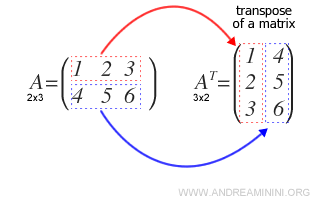
- What is an opposite matrix?
It is a matrix -A with all its elements having the same absolute value but opposite algebraic sign compared to a reference matrix A.
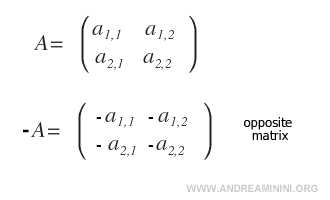
- What is an equivalent matrix?
Two matrices are equivalent if they are associated with linear systems with the same set of solutions.

- What is a symmetric matrix?
A symmetric matrix is a square matrix with corresponding elements equal (aij=aji).
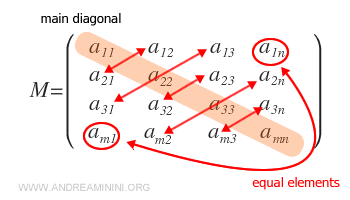
- What is an antisymmetric matrix?
An antisymmetric matrix is a square matrix whose corresponding elements are opposite in sign ( aij=-aji ).
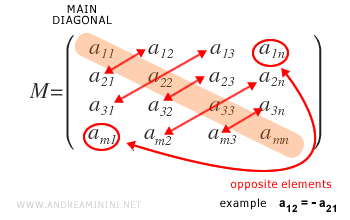
- What is a diagonal matrix?
It is a square matrix with zeros in all elements except those on the main diagonal, which runs from the top-left to the bottom-right corner. This means that the matrix has no entries above or below the diagonal
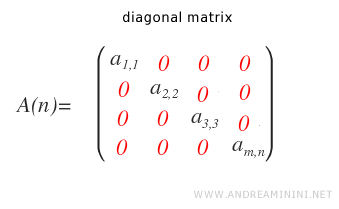
- What is the identity matrix?
The identity matrix (or unit matrix) is a diagonal matrix with all elements on the main diagonal equal to one. It is a subset of scalar matrices.
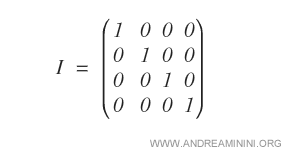
- What is a scalar matrix?
A scalar matrix is a square matrix with all elements on the main diagonal equal to each other and greater than zero. For example, here's a scalar matrix:
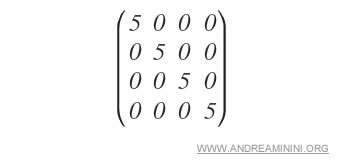
- What is an invertible matrix?
An n × n square matrix A is said to be invertible if there exists an n × n square matrix A-1 of the same order, called the inverse matrix, such that the product A·A-1 and A-1·A are equal to the identity matrix I(n).

- What is the orthogonal matrix?
An invertible matrix A is said to be orthogonal if its transpose AT is equal to its inverse matrix A-1.

- What is the determinant?
The determinant is a number that summarizes the characteristics of a square matrix. It is indicated as det(A) or |A|.
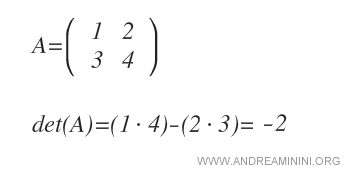
- What is a submatrix?
A submatrix is a matrix obtained by eliminating some rows or columns of the original matrix.
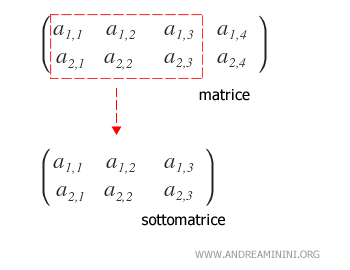
- What is a complementary submatrix?
A complementary submatrix is a lower-order matrix obtained by removing only one row and one column.
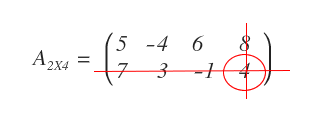
- What is the minor of a matrix?
The minor is the determinant of a square submatrix obtained by removing i rows and j columns.
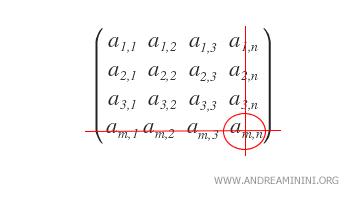
- What is the complementary minor?
In a square matrix A of order n, the complementary minor is the determinant of a complementary submatrix A(ij) that is achieved by removing the i-th row and the j-th column from the matrix A. An example of a complementary minor of the element aij.
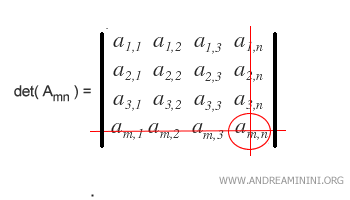
- What is the cofactor?
The cofactor (algebraic complement) is the corresponding minor of the submatrix A(ij), multiplied by a scalar (-1)i+j. It's the corresponding minor calculated with a sign that changes depending on the position of the elements in the submatrix.


- What is the adjugate matrix?
The adjugate matrix is the transpose of the matrix of cofactors.

- What is the trace of a matrix?
The trace of a matrix is the algebraic sum of the elements on its main diagonal.
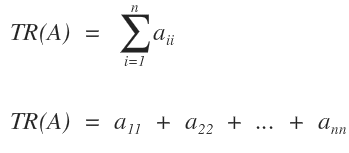
- What is the rank of a matrix?
The rank of a matrix is the highest order of any non-zero minor. - What is a singularity matrix?
A square matrix is referred to as singular if its determinant equals zero. - What are two similar matrices?
Two matrices A and B are said to be similar if there exists an invertible matrix such that M-1AM = B

